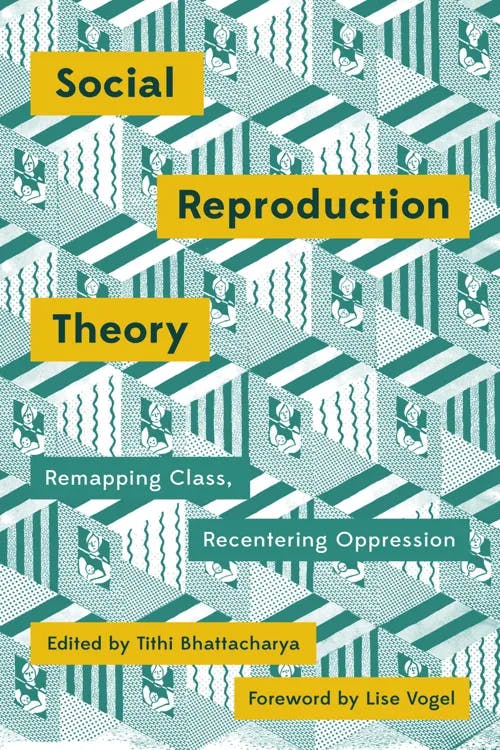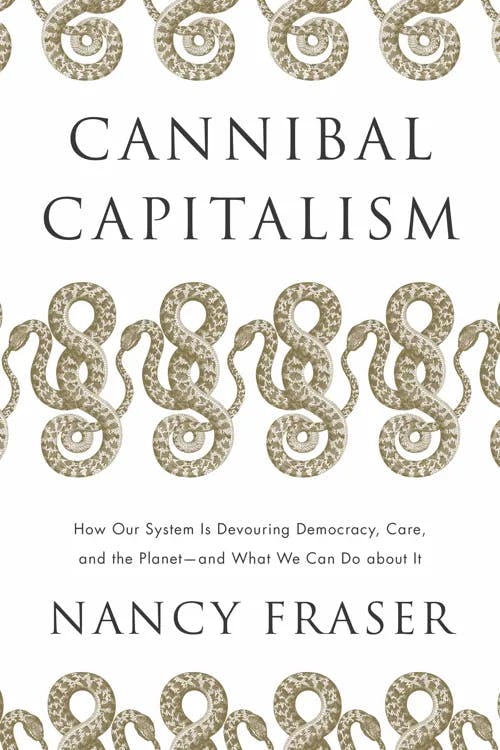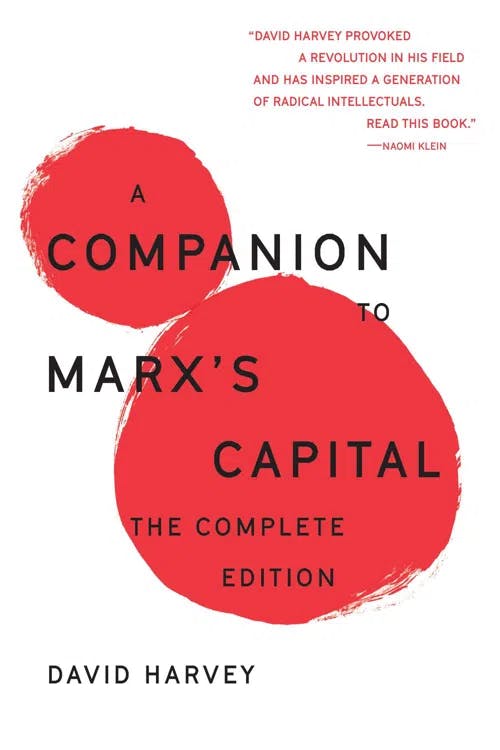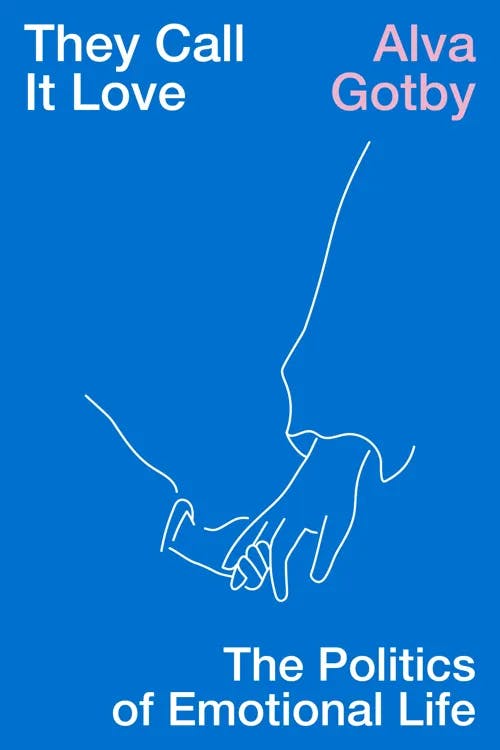What is Social Reproduction?
MA, Sociology (Freie Universität Berlin)
Date Published: 31.01.2024,
Last Updated: 31.01.2024
Share this article
Defining social reproduction
Social reproduction is a concept derived from Marxian theory that refers to the process of maintaining a viable working class under capitalism — both from day to day and across generations. The idea stems from the Marxist notion that society is divided into two spheres: one of production and the other of reproduction, which workers traverse as they enter and exit their wage labor jobs. As Tithi Bhattacharya explains in Social Reproduction Theory,
One understanding of social reproduction is that it is about two separate spaces and two separate processes of production: the economic and the social—often understood as the workplace and home. In this understanding, the worker produces surplus value at work and hence is part of the production of the total wealth of society. At the end of the workday, because the worker is “free” under capitalism, capital must relinquish control over the process of regeneration of the worker and hence the reproduction of the workforce. (2017)
Edited by Tithi Bhattacharya
One understanding of social reproduction is that it is about two separate spaces and two separate processes of production: the economic and the social—often understood as the workplace and home. In this understanding, the worker produces surplus value at work and hence is part of the production of the total wealth of society. At the end of the workday, because the worker is “free” under capitalism, capital must relinquish control over the process of regeneration of the worker and hence the reproduction of the workforce. (2017)
Social reproduction theorists, such as Bhattacharya, argue that this regeneration, which takes place in the sphere of reproduction, is just as necessary to the demands of capitalism as the more obvious act of wage labor. This sphere includes everything from housing, healthcare, education and public policy to intimacy, love, care, and family. These dimensions are all oriented around enabling workers to withstand the demands of wage labor and continue to be productive.
In this study guide, we will begin by exploring the genealogy of this concept through a brief excursus into Marxian theory and methodology. Then we will cover some of the main arenas of social reproduction through a Marxist lens. In the process, we will see how capitalism is riddled with contradictions and paradoxes as society must continually negotiate between the needs of workers and the shortsighted demands of capitalism to generate profit. Finally, we will conclude with an overview of what social reproduction means for Marxist feminism — revealing how capitalism has restructured our emotional lives and relationships.
Genealogy of the term
To understand how the concept of social reproduction was developed, we have to start with the work of Karl Marx himself. Though he did not explicitly use this term, he did gesture to the idea when he remarked in Das Kapital,
When viewed, therefore, as a connected whole and as undergoing incessant renewal, every social process of production is, at the same time, a process of reproduction. (1867, [2012]; abridged version)
Karl Marx
When viewed, therefore, as a connected whole and as undergoing incessant renewal, every social process of production is, at the same time, a process of reproduction. (1867, [2012]; abridged version)
Identifying production and reproduction as parts of “a connected whole” is important here because it is emblematic of Marxist thought and method, which is guided by dialectical materialism.
Drawing on Hegelian philosophy, dialectical materialism refers to the practice of examining phenomena in their totality and understanding states of affairs in terms of the conflicts and contradictions between different parts of the whole. In Beyond Capital, Marxian theorist, Michael Lebowitz explains that “Marx’s goal was to understand bourgeois society as a totality, as an interconnected whole” (2003)
As Marx stated in his 1847 lecture “Wage-Labour and Capital”
The relations of production in their totality constitute what are called the social relations, society, and, specifically, a society at a definite stage of historical development. (reprinted in Wage-Labour and Capital, 2011)
Karl Marx
The relations of production in their totality constitute what are called the social relations, society, and, specifically, a society at a definite stage of historical development. (reprinted in Wage-Labour and Capital, 2011)
Naturally, it follows that Marxian theorists would apply his dialectical materialist method to further explore “the totality of production relations” — including the process of reproduction.
For theorists like Bhattacharya, the spheres of production and social reproduction are two complementary but often conflicting sides of capitalism. The arena of economic production requires the processes of social reproduction to maintain the labor force. Meanwhile, Marxian theorists argue that the sphere of social reproduction — which encompasses our lives outside of work — is oriented around making us able to be productive at our jobs. Yet, the long-term sustenance of the labor force often stands at odds with the short-term, profit motives of capital.
In the following sections, we will explore a few different elements of social reproduction which will make these claims more apparent. So in the words of Marx,
… we therefore take leave for a time of this noisy sphere [of production], where everything takes place on the surface and in view of all men, and follow them both into the hidden abode of production, on whose threshold there stares us in the face “No admittance except on business.” Here we shall see, not only how capital produces, but how capital is produced. We shall at last force the secret of profit making. (“The Buying and Selling of Labour-Power,” Das Kapital, 1867, in Collected Works of Karl Marx and Friedrich Engels, 2021)
Karl Marx and Friedrich Engels
… we therefore take leave for a time of this noisy sphere [of production], where everything takes place on the surface and in view of all men, and follow them both into the hidden abode of production, on whose threshold there stares us in the face “No admittance except on business.” Here we shall see, not only how capital produces, but how capital is produced. We shall at last force the secret of profit making. (“The Buying and Selling of Labour-Power,” Das Kapital, 1867, in Collected Works of Karl Marx and Friedrich Engels, 2021)
Elements of social reproduction
Social reproduction offers new ways of thinking about the constituent elements of society and how they are influenced and propelled by the requirements of capitalism. Nancy Fraser, argues that capitalism,
is best conceived as an institutionalized societal order, on a par with, for example, feudalism. Understanding capitalism in this way underscores its structural divisions [...] Constitutive of capitalism, we have seen, is the institutional separation of “economic production” from “social reproduction,” a gendered separation that grounds specifically capitalist forms of male domination [...]. Also definitive of capitalism is the institutional separation of “economy” from “polity”—a separation that expels matters defined as economic from the political agenda.(Cannibal Capitalism, 2022)
Nancy Fraser
is best conceived as an institutionalized societal order, on a par with, for example, feudalism. Understanding capitalism in this way underscores its structural divisions [...] Constitutive of capitalism, we have seen, is the institutional separation of “economic production” from “social reproduction,” a gendered separation that grounds specifically capitalist forms of male domination [...]. Also definitive of capitalism is the institutional separation of “economy” from “polity”—a separation that expels matters defined as economic from the political agenda.(Cannibal Capitalism, 2022)
Thus, the state (what Fraser refers to here as “polity”), and even gender dynamics, play key roles in the social reproduction sphere of capitalism, when conceived as an all-encompassing institutionalized social order.
This expanded conception of capitalism also reveals some of the contradictions and paradoxes that are intrinsic to it, a central theme in social reproduction theory. In what Fraser describes as “a serpent that eats its own tail, it cannibalizes its own conditions of possibility” (2022). Let’s take a closer look at how the arenas of government, education, and healthcare all serve the imperatives of social reproduction under capitalism in the long term — while, at times, also being at odds with it in the short term. This has culminated in a full-on crisis of social reproduction on numerous fronts.
The state
Within the wider field of Marxian political economy, of which social reproduction is a part, the main function of the state is to facilitate the requirements of capitalist accumulation. This runs in contrast to mainstream liberal ideologies around capitalism that regard the economy as a completely separate, self-regulating sphere. Instead, Marxists argue that the state is essential to securing. Continuing with Fraser, the state is charged with securing,
capitalism’s political conditions of possibility: [by facilitating] its reliance on public powers to establish and enforce its constitutive norms. Capitalism is inconceivable, after all, in the absence of a legal framework underpinning private enterprise and market exchange. Its front story depends crucially on public powers to guarantee property rights, [and] enforce contracts. (2022)
But the state’s role doesn’t end with protecting private property or enforcing corporate law. It is also charged with, “the task of governing ‘non-economic’ orders, including those that supply the external conditions for accumulation” (Fraser, 2022). These external conditions include some of the tasks of social reproduction that are necessary for maintaining a viable labor force.
Many Marxian theorists contend that one of the state’s main functions is to maintain a productive labor force by training workers, quelling political unrest, and managing those unfit or unable to work via the prison as well as through social welfare programs. As David Harvey argues in A Companion to Marx’s Capital,
Actually, even in a state controlled by capitalists and landlords, matters of social reproduction are never left solely to the workers themselves, [...] the educational clauses of the Factory Acts provided an example of state intervention in the politics of working-class reproduction, and the state has always been active in the fields of public health (given that cholera had the awkward habit of transcending class boundaries) and reproductive rights, population policies and the like. (2018)
David Harvey
Actually, even in a state controlled by capitalists and landlords, matters of social reproduction are never left solely to the workers themselves, [...] the educational clauses of the Factory Acts provided an example of state intervention in the politics of working-class reproduction, and the state has always been active in the fields of public health (given that cholera had the awkward habit of transcending class boundaries) and reproductive rights, population policies and the like. (2018)
Through the lens of social reproduction, we can identify the motivations and imperatives driving these kinds of state-sponsored policies as being about reproducing a functional labor force.
This also manifested in the post-WWII Keynesian welfare programs and projects that helped maintain high levels of employment during Fordism. In a more recent example, social reproduction theory helps explain why, over the last ten years, the German government — which is facing a crisis as its population ages out of the labor force — has relaxed citizenship requirements for immigrants. Continuing with Harvey’s examples of education and healthcare, in the following sections we will explore some of the underlying conflicts that come into play with respect to public policy in the name of social reproduction on one hand and the short-term profit motives of the market on the other.
Education
Public education is key to reproducing the labor force across generations, as it serves the function of training future workers with the necessary skills to be productive members of society. More than this, the education system is also a mechanism for socializing children into the capitalist economy, as they are subjected to environments of discipline, rationalism, and regimentation. As Susan Ferguson shows us in her chapter, “Children, Childhood and Capitalism: A Social Reproduction Perspective,”
Schools (like all social reproductive institutions) were established to deal with the tension between children’s pursuit of pleasure and the anxieties that pursuit elicited.They did so, in the first instance, largely through corporal punishment of “misbehaving” children and the policing of truants. Today, with compulsory schooling more normalized, a softer discipline (backed up by legal force, of course) is generally adequate. [...] Schooling is fundamentally about disciplining children. (in Social Reproduction Theory, 2017)
Edited by Tithi Bhattacharya
Schools (like all social reproductive institutions) were established to deal with the tension between children’s pursuit of pleasure and the anxieties that pursuit elicited.They did so, in the first instance, largely through corporal punishment of “misbehaving” children and the policing of truants. Today, with compulsory schooling more normalized, a softer discipline (backed up by legal force, of course) is generally adequate. [...] Schooling is fundamentally about disciplining children. (in Social Reproduction Theory, 2017)
In this chapter, she also reveals the complex — and at times contradictory — nature of social reproduction, as exemplified in the contemporary education system:
The current-day emphasis in many schools on “inquiry-based” learning also addresses and provides scope for children’s more curious, creative, and playful relationship to the world. This is not to say that such initiatives are not also simultaneously attempts to channel these open-ended childish energies into “productive” ends—they are—or that all children enjoy or benefit from them. Further, these initiatives never completely supplant or even overshadow the more work-like curriculum based on rote learning and standardized testing. (Ferguson, 2017)
This example demonstrates how, in one sense, arenas of social reproduction are meant to satisfy human needs and impulses that don't directly seem to relate to capitalism. Yet, ultimately they do so in ways that redirect those needs and impulses back into the capitalist system — such as in the case of children finding “productive” outlets for play. This might include schools justifying school recess as a means of making children more focused during class and improving their academic performance. This is illustrative of how, as social reproduction theorists such as Ferguson, Fraser, Lebowitz, and others suggest, capitalism reorients all aspects of our lives in the service of its demands.
Such is further evident in the era of neoliberalism, which has extended principles of marketization into public goods and services that serve the function of social reproduction. For example, public higher education has largely been privatized in places like the US and the UK. In the former, primary and secondary schools are also increasingly subjected to standardization in curricula and testing over being tailored to children’s particular needs. Discipline has also been heightened in schools under neoliberalism, as exemplified by the increased police presence in many schools in poor and urban areas. Ironically, as Fraser puts forth in Cannibal Capitalism, the marketization of social reproduction also serves to undermine the functioning of these arenas. As we will see next, the realm of healthcare offers another case in point.
Healthcare
As David Harvey has suggested, public health has long been another key arena of social reproduction (2018). It serves the function of ensuring that people are healthy enough to stay in the labor force from adolescence until retirement. Looking at public health policy through the lens of social reproduction is also instructive in terms of understanding why certain decisions have been taken over others. One such example comes with respect to the Covid-19 pandemic. American policymakers, for instance, pushed to roll out the vaccine as soon as possible so they could justify ending the lockdown and lowering the mandatory number of days those who tested positive needed to quarantine. This facilitated getting people back to work faster, while also securing enormous profits for big pharma (the large monopoly of drug manufacturers).
Fraser also uses this example to reflect on the tendency of capitalism to function as a beast that eats its own tail:
COVID’s effects on humans would be horrific under any conditions. But they have been incalculably worsened by another strand of the present crisis [of social reproduction], rooted in another structural contradiction of capitalist society, also sharpened to a fever pitch in the neoliberal era. It is, after all, not “just” nature that capital has cannibalized in this period, but also public power. [...] Well before the COVID outbreak, most states bowed to demands of “the markets” by slashing social spending, including in public health infrastructure and basic research. (2022)
Here she observes some of the tensions between the need for a functioning healthcare system to maintain a healthy labor force and the simultaneous hollowing out of such a system in the service of short-term profit-making under neoliberal capitalism. Such is further exemplified in the dismantling of the National Health Service (NHS) in the UK as part of a general trend towards privatization.
Social reproduction and Marxist feminism
Harking back to Bhattacharya’s words at the outset of this study guide, nowhere more concretely represents the duality between the spheres of production and reproduction as the workplace and the home. The home is where much of the most basic and essential dimensions of social reproduction happen from day to day. It is where we retire after work to rest and nourish ourselves for our next shift. It’s also where we raise our families and spend quality time with loved ones. In these ways, domestic life is pivotal to satisfying social needs that are just as essential to human functioning as the aforementioned elements of healthcare, education, and public policy.
In fact, particularly as these other arenas of social reproduction are being cannibalized under neoliberalism, more and more of these functions must take place privately within the home. As Alva Gotby reflects in her book, They Call It Love, “The neoliberal logic which seeks to place responsibility for forms of care, previously provided by the welfare state, [occurs] in the private household” (2023).
This has gendered implications, as the domestic sphere has long been the subject of critique among feminists, perhaps most famously in texts like Betty Friedan’s The Feminine Mystique (1963). For more on Friedan and the challenging of traditional gender roles in the 1960s, see our study guide “Waves of Feminism - First to Fourth Wave Timeline.”
For Marxist feminists in particular, the work of social reproduction that generally takes place in the home — including care as well as housework — represents a gendered division of labor under capitalism.
The gendered labor of care under capitalism
The concept of social reproduction helps Marxist feminists situate the feminized forms of labor within an expanded conception of capitalism, and it explains how different forms of care are crucial to this system. As pointed out by Fraser,
Marxists have rightly located the secret of accumulation in the “hidden abode” of commodity production, where capital exploits wage labor. But they have not always fully appreciated that this process rests on the even more hidden abode of unwaged carework, often performed by women, which forms and replenishes the human subjects who constitute “labor.” Deeply dependent on such social-reproductive activities, capital nonetheless accords them no (monetized) value, treats them as free and infinitely available, and makes little or no effort to sustain them. (2022)
This “hidden abode,” most tangibly, refers to this domestic sphere, and Marxist feminists point out how these social reproductive demands — from childcare to love and intimacy to housework — have historically been offloaded onto women.
A real-life example of how the demands of social reproduction all culminate to help maintain a viable labor force can be found in the nuclear family model and the role of the 1950s housewife within it. During this period, men often worked outside the home and in factories featuring assembly line production. These workers were, therefore, subject to highly monotonous, alienating, and depersonalized forms of labor. The nuclear household — complete with a dutiful housewife — was an essential ingredient to making this arrangement sustainable. This is because the male breadwinner could come home and lord over the family unit as an outlet for dealing with the demands of the workday. Meanwhile, women were charged with a whole roster of unpaid domestic work including cooking, cleaning, caring for their husbands, and raising the children.
Today, thanks to the efforts of feminists to change it — such as in the 1970s Wages for Housework Movement, which challenged these forms of gendered exploitation — the model of the nuclear family is no longer as regimented or widespread. Yet, Marxist feminists still contend that much of these forms of labor still fall to women. This includes outsourcing domestic labor to women from the global South as — largely white, middle-class — women have entered the white-collar labor force. (For more on domestic labor, gender, and race, see our guide "What is Black Feminism?")
Gendered forms of care also involve all the less visible ways within their interpersonal relationships with men. This is the core argument of Gotby’s book The Call It Love, wherein she argues that,
The emotional labour that women perform – by creating niceness and emotional attachments to a particular form of life – is a very effective way of ensuring the reproduction of society as we know it. [...] it is considered natural that men consume love, whereas women’s ‘generous’ personalities are productive of love. The construction of women as generous also implies that for women, love is its own reward – to perform the work of love is a sufficient source of pleasure, so that no other remuneration is needed. (2023)
Alva Gotby
The emotional labour that women perform – by creating niceness and emotional attachments to a particular form of life – is a very effective way of ensuring the reproduction of society as we know it. [...] it is considered natural that men consume love, whereas women’s ‘generous’ personalities are productive of love. The construction of women as generous also implies that for women, love is its own reward – to perform the work of love is a sufficient source of pleasure, so that no other remuneration is needed. (2023)
Marxist feminists such as Gotby, Fraser, Ferguson, and Bhattacharya, believe that today women are still charged with a disproportionate amount of — often unwaged and unrecognized — forms of social reproductive labor that are necessary for capitalism’s function. Although gendered norms are not as obvious as they may have been in the 1950s, women are still expected to nurture, care, comfort, and perform other forms of emotional labor in intimate and familial relationships. This helps ensure that workers can endure the demands of wage labor under capitalism and helps to raise children into the next generation of the labor force.
Closing thoughts
Social reproduction theory plays into an expanded conception of capitalism that is not merely an economic system, but an all-encompassing institutionalized social order oriented around capital accumulation. It also represents a continuation of Marxian theory and method, as scholars — most notably Marxist feminists — further develop his ideas and allusions in Das Kapital. Their contributions help us understand the underlying factors that produce gendered social hierarchies that persist within society today. Social reproduction also offers insights into the motivations behind public policy choices in the realms of healthcare, education, and more.
Beyond this, the work of theorists like Nancy Fraser and others in further exploring the dynamics of capitalism in their totality helps to elucidate the myriad contradictions innate to this system. Namely, in the tensions that exist between social reproduction and production, we witness its cannibalizing nature. In other words, capitalism increasingly prioritizes short-term profit gains to the detriment of its long-term sustainability. This has produced a crisis of social reproduction, as necessary public goods are increasingly privatized and made less accessible to the labor force that needs them to reproduce itself.
Looking ahead, it remains unclear what the shortsighted demands of capital to expand to new markets will mean for the realm of social reproduction. For example, if entire generations are unable to afford healthcare or education without being burdened with enormous levels of debt, this could have destructive implications for maintaining a viable labor force. Still, despite its many paradoxes, capitalism often finds ways to resist collapse. Even so, social reproduction theory offers us crucial ways of thinking about these exploitative conditions so that we might be able to dismantle them in service of building a more inclusive and just future.
Further reading on Perlego
Feminism for the 99%: A Manifesto (2019) by Cinzia Arruzza, Tithi Bhattacharya, and Nancy Fraser
Family Welfare and the State: Between Progressivism and the New Deal (2021) by Mariarosa Dalla Costa and Rafaella Capanna
Patriarchy of the Wage: Notes on Marx, Gender, and Feminism(2021) by Silvia Federici
The Managed Heart: Commercialization of Human Feeling (2012) by Arlie Russell Hochschild
Work Won’t Love You Back: How Devotion to Our Jobs Keeps Us Exploited, Exhausted and Alone (2021) by Sarah Jaffe
Nancy Fraser, Social Justice and Education (2020) Edited by Carol Vincent
What is social reproduction in simple terms?
What is an example of social reproduction?
What scholars are associated with social reproduction?
Bibliography
Bhattacharya, T. (2017) “Introduction: Mapping Social Reproduction Theory” in Bhattacharya, T.(ed.) Social Reproduction Theory: Remapping Class, Recentering Oppression. Pluto Press. Available at: https://www.perlego.com/book/665246/social-reproduction-theory-remapping-class-recentering-oppression-pdf
Ferguson, S. (2017) “Children, Childhood and Capitalism: A Social Reproduction Perspective” in Bhattacharya, T. (ed.) Social Reproduction Theory: Remapping Class, Recentering Oppression. Pluto Press. Available at: https://www.perlego.com/book/665246/social-reproduction-theory-remapping-class-recentering-oppression-pdf
Fraser, N. (2022) Cannibal Capitalism: How our System is Devouring Democracy, Care, and the Planet – and What We Can Do About It. Verso. Available at: https://www.perlego.com/book/3710309/cannibal-capitalism-how-our-system-is-devouring-democracy-care-and-the-planet-and-what-we-can-do-about-it-pdf
Friedan, B. (1963) The Feminine Mystique. W. W. Norton.
de Haan, E. (2023) “Big Pharma raked in USD 90 billion in profits with COVID-19 vaccines.” The Center for Research on Multinational Corporations. https://www.somo.nl/big-pharma-raked-in-usd-90-billion-in-profits-with-covid-19-vaccines/
Gotby, A. (2023) They Call It Love: The Politics of Emotional Life. Verso. Available at: https://www.perlego.com/book/3785979/they-call-it-love-the-politics-of-emotional-life-pdf
Harvey, D. (2018) A Companion to Marx’s Capital. Verso. Available at: https://www.perlego.com/book/827854/a-companion-to-marxs-capital-the-complete-edition-pdf
Lebowitz, M. (2003) Beyond Capital: Marx’s Political Economy of the Working Class. Palgrave Macmillan. Available at: https://www.perlego.com/book/3496702/beyond-capital-marxs-political-economy-of-the-working-class-pdf
Marx, K. (2011) Wage-Labour and Capital. Barnes & Noble. Available at:
Marx, K. (2012) Das Kapital. Gateway Editions. Available at: https://www.perlego.com/book/784600/das-kapital-a-critique-of-political-economy-pdf
Marx, K. (2021) Collected Works of Karl Marx and Friedrich Engels. Illustrated. Available at:
Toupin, L. (2018) Wages for Housework: A History of an International Feminist Movement, 1972-77. Pluto Press. Available at:
MA, Sociology (Freie Universität Berlin)
Lily Cichanowicz has a master's degree in Sociology from Freie Universität Berlin and a dual bachelor's degree from Cornell University in Sociology and International Development. Her research interests include political economy, labor, and social movements. Her master's thesis focused on the labor shortages in the food service industry following the Covid-19 pandemic.







